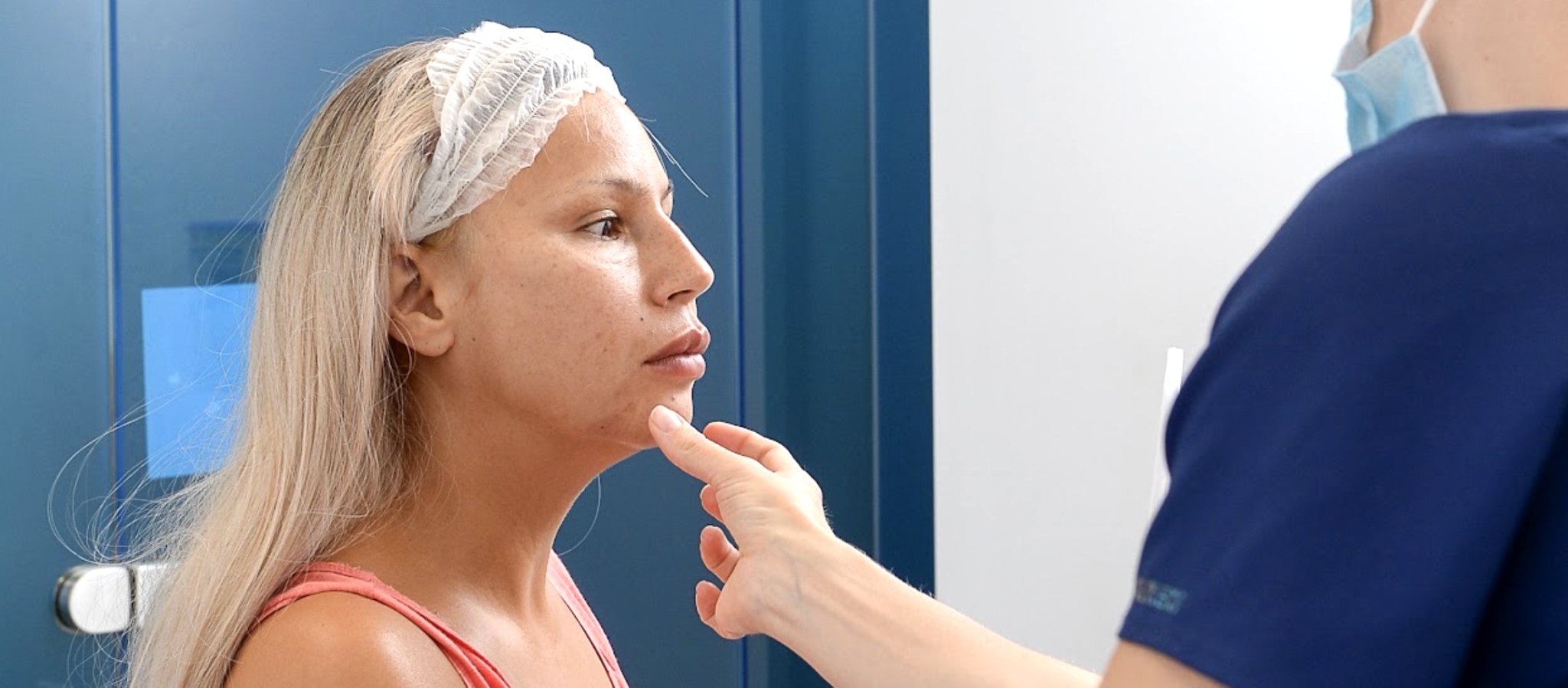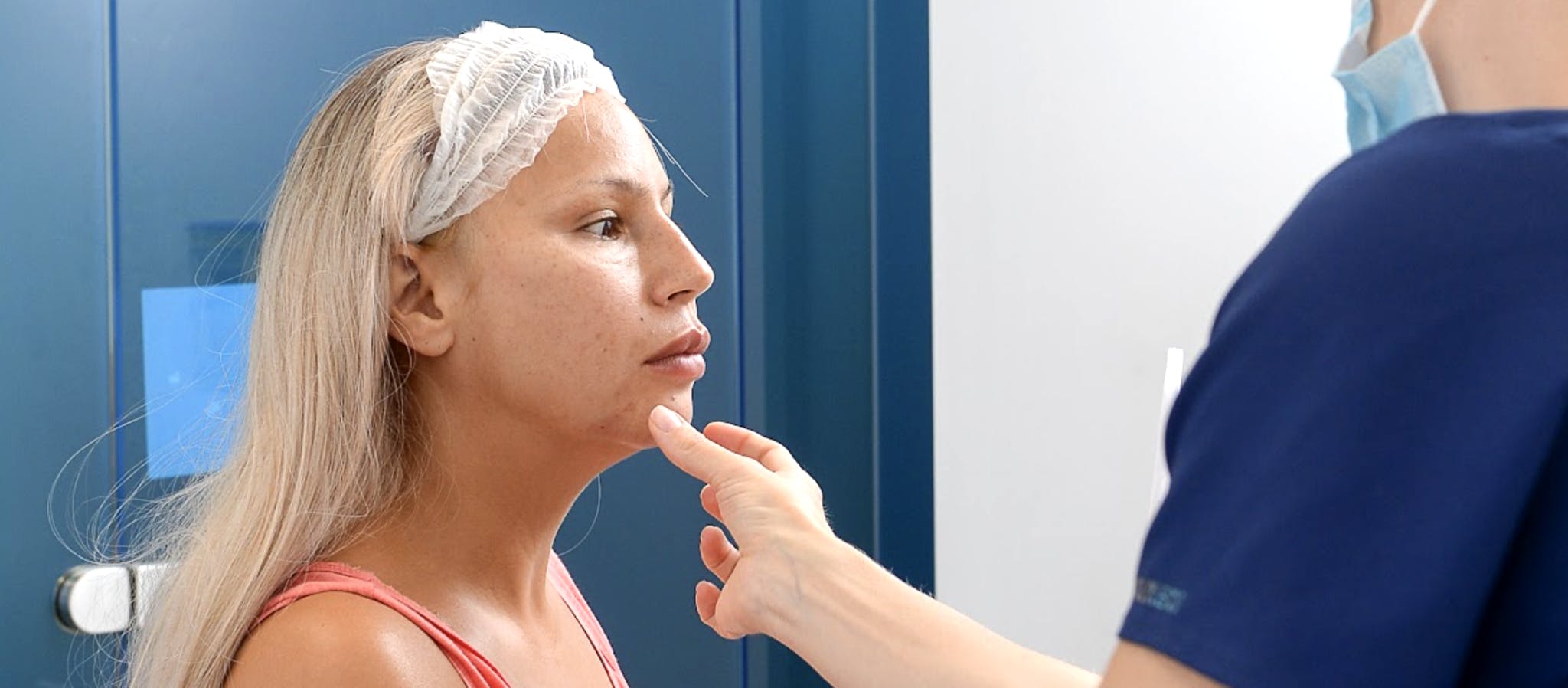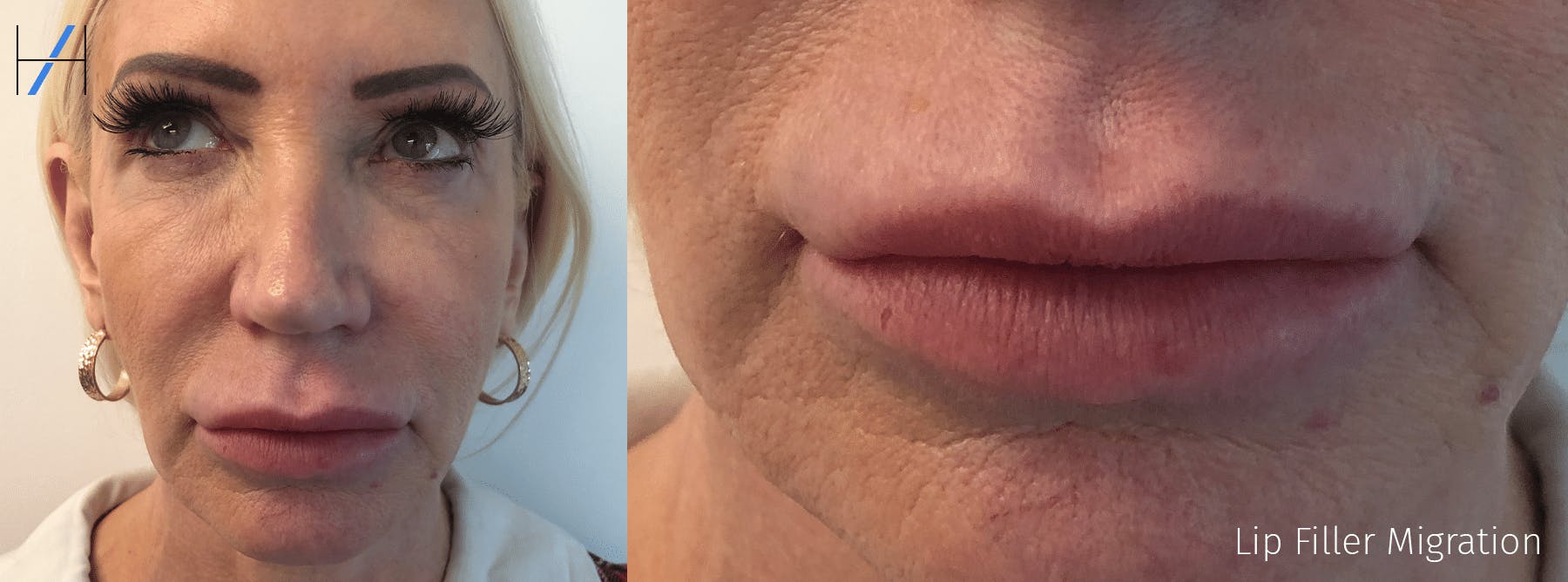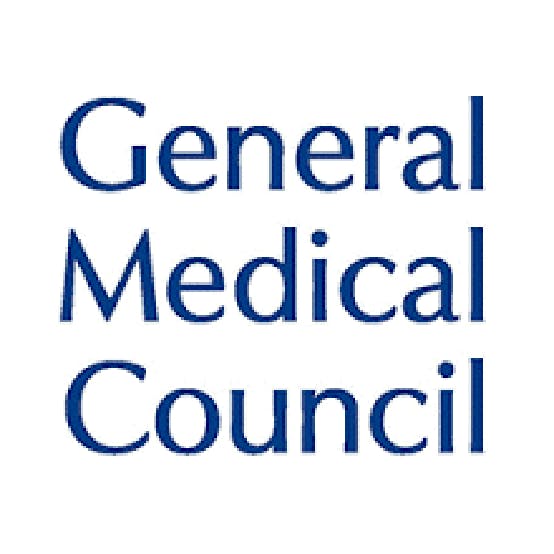How to identify Lip Filler migration

“Lip filler migration is possibly the most common complication we see as aesthetics practitioners.” This was the first thing Dr Carol Mastropierro told us when asked about this popular topic.
Dr Carol is an experienced facial aesthetics specialist and clinical trainer at Harley Academy.
Despite this being considered a common complication, there’s a lot of patient-facing misinformation surrounding lip filler migration. In fact, some injectors have reported being asked to create a look that imitates migrated filler, likely due to social media popularising the look.
In order to help you understand what to look for when assessing lip augmentation patients for potential filler migration, we put a number of frequently asked questions to her...

DR CAROL'S ADVICE ON IDENTIFYING LIP FILLER MIGRATION
“The reasons for lip filler migration are multifactorial,” advises Dr Carol.
“It can be down to inappropriate filler selection, poor injection technique, excessive amounts injected and the anatomy of the lips themselves.”
Here she explains some of the key aspects new aesthetics practitioners should know about identifying lip filler migration.
What to look for when assessing patients who have had filler previously
“When assessing a patient who’s had lip filler previously, lips should be palpated and migration should always be assessed,” says Dr Carol. “This applies no matter how long ago the filler was injected.”
“Patients and some practitioners often believe that lip filler will only last 6 months,” she states. “However, anecdotal evidence and some recent studies suggest that hyaluronic acid filler can actually last much longer.”
“Every patient should be carefully assessed from the front and in profile,” she notes. “They should also be viewed in animation, such as smiling and blowing a kiss, to see their movements.”
“If lip filler migration is present, a ‘ledge’ can be seen in the ‘white’ part of the lip,” explains Dr Carol.

“Anatomically, ‘lips’ refers to the whole area occupied by the orbicularis oris muscle. In everyday terms, ‘lips’ is the ‘pink’ part only. This ‘pink’ part – which is obviously not always visually pink depending on the patient’s race – is non keratinising epithelium. The ‘white’ area – the space between the bottom of the nose and the top lip – is keratinising.”
She adds, “The ‘pink’ and ‘white’ parts are divided in the dermis by the vermillion border – ‘vermillion’ being Latin for red. However, do be aware that the actual colour will vary based on your patients’ ethnicity. In all cases it should appear darker than the patient’s natural lip colour.”
What other tests can you do to check for migrated lip filler?
Dr Carol continues, “The next step will be palpation which is also useful for excluding any lumps! If there’s migration, the white lip area will feel ‘squishy’ and plump.”
Although there isn’t any evidence of difference in the presentation of lip filler migration based on gender or ethnicity, metabolism may play a role. People who break down filler more slowly will more likely present with migration.

How long does it take for lip filler migration to present?
“Migration can present sooner or later depending on the volume injected,” she notes.
“It can present as soon as 4-6 weeks if the lips were grossly overfilled. Or it may appear months later if the migration is more gradual. There’s no definitive answer so, if your patient has had lip filler in the past, always check for signs before treating.”
LEARNING HOW TO PREVENT AND MANAGE COMPLICATIONS
As stated, lip filler migration is a complication – and a common one at that. Learning how to prevent and manage complications is a vital part of being a competent, ethical injector.
This aspect of aesthetic medicine practice is covered as part of our comprehensive, Ofqual-regulated Level 7 Diploma in Botox & Dermal Fillers. Offering a widely respected, Master’s level postgraduate qualification in injectables, this course provides a holistic approach to aesthetics for doctors, dentists and nurses.
This includes dedicated learning on preventing and managing dermal filler complications.
For more information, book a call with our courses advisor, Christine Slater, today.
All information correct at the time of publication.












